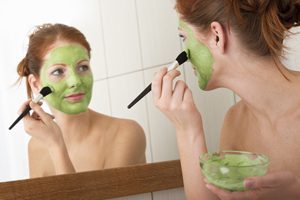What you should know about your personal products.
Green is trendy. Green is everywhere. As people become more aware of their impact on the environment, corporations are bound to use the trend to their advantage. This is especially true in the cosmetics and personal products industry. Marketers have caught on that green equals dollar signs and they are riding the eco wave. Advertising campaigns and product packages boast that products are “all natural,” while in reality, the majority of ingredients are anything but.
How can this be true, you ask? Isn’t there some federal association making sure the products I use every day are labeled accurately and are safe? Sadly ladies, there is not.
As you slather those sweet smelling lotions on your skin (your body’s largest organ which absorbs approximately 60 percent of the products you apply into your bloodstream), keep in mind that you are using products that have never been reviewed or approved as safe for human use by the U.S. government.
However, if you are living in another part of the world, the safety of the products you use might be under a watchful eye.
The European Union, for instance, regulates personal products and has banned hundreds of chemicals from being used in them. The E.U. is not unique. Other countries have followed suit, including Canada, Japan, Argentina, Brazil, Korea and China—but the United States has a different way of doing things.
Instead of instituting regulations or reviewing products for safety before they hit the shelves and make their way into your bloodstream, the Food and Drug Administration leaves it up to the manufacturer to determine the safety of its product. Employing a hands-off approach, the FDA will look into the safety of a product or ingredient only after a large number of complaints have been filed.
Those complaints must then be proven in court, which can take several years. In the meantime, we are all soaking up the harmful chemicals that can lead to a large range of allergies and dysfunctions, including cancer.
It’s up to you to protect yourself and your family. Learn to read the labels on your products. The proof is in the ingredients list. Be aware. Don’t be a victim of greenwashing or the U.S. government’s laissez-faire attitude toward your health.
Read the Label!
Generally, if it sounds like a chemical or it is difficult to pronounce, it probably isn’t good for you.
To learn more about these chemicals and why they are so toxic, visit the Environmental Working Group website at www.ewg.org.
To learn what’s in the products you currently use and what their safety ratings are visit the Skin Deep Cosmetic Safety Database at cosmeticsdatabase.com.
